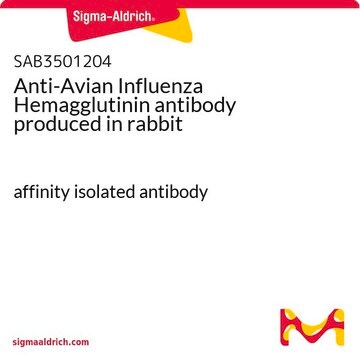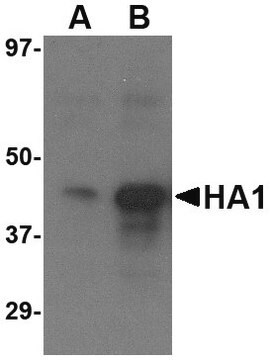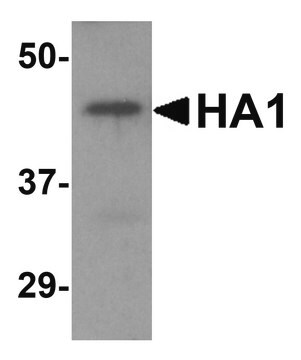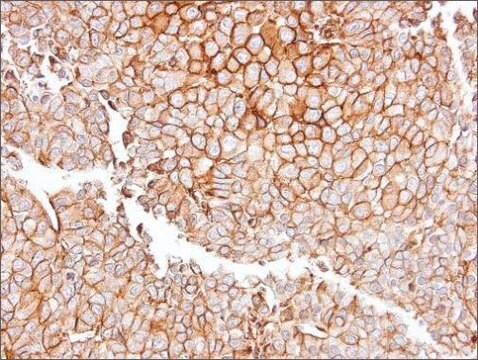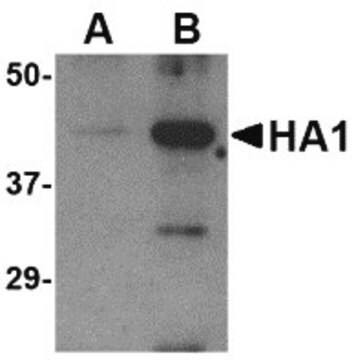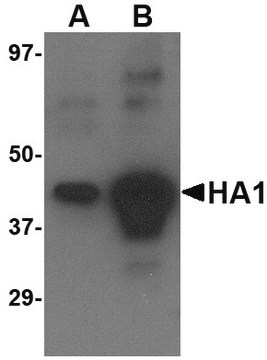推荐产品
一般說明
Hemagglutinin Monoclonal Antibody: Influenza A virus is a major public health threat, killing more than 30,000 people per year in the USA. Novel influenza virus strains caused by genetic drift and viral recombination emerge periodically to which humans have little or no immunity, resulting in devastating pandemics. Influenza A can exist in a variety of animals; however it is in birds that all subtypes can be found. These subtypes are classified based on the combination of the virus coat glycoproteins hemagglutinin (HA) and neuraminidase (NA) subtypes. During 1997, an H5N1 avian influenza virus was determined to be the cause of death in 6 of 18 infected patients in Hong Kong. The more recent virulent strain of H5N1 is now seen in Africa and Europe, as well as in southeast Asia. There is some evidence of human to human spread of this virus, but it is thought that the transmission efficiency was fairly low. HA interacts with cell surface proteins containing oligosaccharides with terminal sialyl residues. Virus isolated from a human infected with the H5N1 strain in 1997 could bind to oligosaccharides from human as well as avian sources, indicating its species-jumping ability. While efforts were made to use relatively conserved regions of the viral sequence as the antigen, the influenza virus genome has drifted somewhat from what was first reported. However, this antibody was able to recognize peptides derrived from viruses from Indonesian human patients infected in 2007.
免疫原
A peptide corresponding to 13 amino acids in the middle of the Hemagglutinin protein.
應用
Hemagglutinin antibody can be used for the detection of the Hemagglutinin protein from the H5N1 strain of avian influenza A in ELISA. It will detect 10 ng of free peptide at 1 μg/mL. Other applications are pending.
外觀
Supplied in PBS containing 0.02% sodium azide.
未找到合适的产品?
试试我们的产品选型工具.
儲存類別代碼
12 - Non Combustible Liquids
水污染物質分類(WGK)
nwg
閃點(°F)
Not applicable
閃點(°C)
Not applicable
我们的科学家团队拥有各种研究领域经验,包括生命科学、材料科学、化学合成、色谱、分析及许多其他领域.
联系技术服务部门